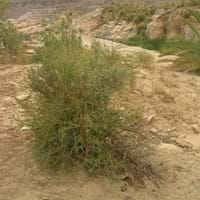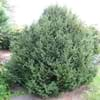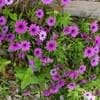Life Span
Perennial
Perennial
Type
Flowering Plants, Shrub
Grass
Origin
North Africa
North America, Canada, Mexico
Types
Not Available
Bigleaf hydrangea, Hortensia, Smooth hydrangea, Oakleaf hydrangea, Annabelle
Habitat
Desert, Rocky Mountains
Forest edges, Hillside, Woods
USDA Hardiness Zone
Not Available
Not Available
AHS Heat Zone
Not Available
9*1
Sunset Zone
Not Availble
1a, 1b, 2a, 2b, 3a, 3b, 4, 5, 6, 7, 8, 9, 10, 11, 14, 15, 16, 17, 18, 19, 20, 21, 22, 23
Habit
Bushy, Evergreen
Upright/Erect
Flower Color
White
Blue, Dark Purple, Light Purple, Red, White
Flower Color Modifier
Bicolor
Bicolor
Fruit Color
Black, Blue
Not Available
Leaf Color in Spring
Green, Dark Green
Green, Light Green, Blue Green, Gray Green
Leaf Color in Summer
Dark Green
Light Green
Leaf Color in Fall
Green, Dark Green
Red, Green, Orange, Blue Green, Gray Green, Bronze
Leaf Color in Winter
Green
Tan, Sandy Brown
Leaf Shape
Ovate
Oblovate
Plant Season
Summer
Spring, Summer, Fall, Winter
Sunlight
Full Sun
Full Sun, Partial Sun
Type of Soil
Clay, Loam, Sand
Clay, Loam, Sand
The pH of Soil
Acidic, Neutral
Acidic, Neutral, Alkaline
Soil Drainage
Moist but well drained
Average
Bloom Time
Late Summer, Summer
Early Summer, Summer, Late Summer
Tolerances
Moisture
Pollution, Soil Compaction
Where to Plant?
Container, Pot
Container, Ground
How to Plant?
Seedlings, Semi-hardwood cuttings
Seedlings, Stem Planting
Plant Maintenance
Medium
Medium
Watering Requirements
Needs less watering
Not Available
In Summer
Ample Water
Drought Tolerant, Average Water
In Spring
Average Water
Moderate
In Winter
Less Watering
Average Water
Soil pH
Acidic, Neutral
Not Available
Soil Type
Clay, Loam, Sand
Not Available
Soil Drainage Capacity
Moist, Well drained
Not Available
Sun Exposure
Full Sun
Not Available
Pruning
Prune after flowering, Prune for shortening long shoots, Remove dead or diseased plant parts
Remove damaged leaves, Remove dead branches, Remove dead leaves
Fertilizers
Any balanced general purpose fertilizer
All-Purpose Liquid Fertilizer
Pests and Diseases
Healthy tree
Red blotch
Plant Tolerance
Moisture
Pollution, Soil Compaction
Flower Petal Number
Not Available
Single
Fragrant Bark/Stem
Yes
No
Foliage Texture
Fine
Fine
Foliage Sheen
Glossy
Not Available
Invasive
No
Not Available
Self-Sowing
No
Not Available
Attracts
Butterflies
Bees, Flies
Allergy
Not Available
Chest tightness, Diarrhea, Dizziness, Nausea, Vomiting
Aesthetic Uses
Showy Purposes
Not Available
Beauty Benefits
Acne, Good for skin
Not Available
Edible Uses
No
Not Available
Environmental Uses
Air purification, Food for birds
Air purification
Medicinal Uses
Antibacterial, anti-cancer, Antidiabetic, Heart problems, Kidney problems, Respiratory Disorders, Thyroid problems
Fever, Kidney problems, Urinary tract problems
Part of Plant Used
Flowers, Leaves
Flowers, Root
Other Uses
Used as essential oil, Used in herbal medicines
Not Available
Used As Indoor Plant
No
Not Available
Used As Outdoor Plant
Yes
Yes
Garden Design
Container, Edible, Fruit / Fruit Tree, Shade Trees, Tropical
Not Available
Botanical Name
Myrtus nivellei
PANICUM virgatum 'Northwind'
Common Name
Saharan myrtle
Northwind Switchgrass, Switchgrass
In Hindi
Saharan myrtle
Hydrangea
In German
Saharan myrtle
Hortensie
In French
myrte subsaharienne
Hortensia
In Spanish
mirto subsahariana
Hortensia
In Greek
Σαχάρας μυρτιά
υδραγεία
In Portuguese
murta Saharan
Hortênsia
In Polish
mirt Subsaharyjskiej
Hortensja
In Latin
myrto Saharan
Hibiscus
Phylum
Magnoliophyta
Not Available
Class
Magnoliopsida
Not Available
Order
Myrtales
Not Available
Family
Myrtaceae
Not Available
Genus
Myrtus
Not Available
Clade
Angiosperms, Eudicots, Rosids
Not Available
Tribe
Not Available
Not Available
Subfamily
Not Available
Not Available
Number of Species
Not Available
Importance of Saharan Myrtle and Northwind Switchgrass
Want to have the most appropriate plant for your garden? You might want to know the importance of Saharan Myrtle and Northwind Switchgrass. Basically, these two plants vary in many aspects. Compare Saharan Myrtle and Northwind Switchgrass as they differ in many characteristics such as their life, care, benefits, facts, etc. Every gardener must at least have the slightest clue about the plants he wants to plant in his garden. Compare their benefits, which differ in many ways like facts and uses. The medicinal use of Saharan Myrtle is Antibacterial, anti-cancer, Antidiabetic, Heart problems, Kidney problems, Respiratory Disorders and Thyroid problems whereas of Northwind Switchgrass is Fever, Kidney problems and Urinary tract problems. Saharan Myrtle has beauty benefits as follows: Acne and Good for skin while Northwind Switchgrass has beauty benefits as follows: Acne and Good for skin.
Compare Facts of Saharan Myrtle vs Northwind Switchgrass
How to choose the best garden plant for your garden depending upon its facts? Here garden plant comparison will help you to solve this query. Compare the facts of Saharan Myrtle vs Northwind Switchgrass and know which one to choose. As garden plants have benefits and other uses, allergy is also a major drawback of plants for some people. Allergic reactions of Saharan Myrtle are Not Available whereas of Northwind Switchgrass have Chest tightness, Diarrhea, Dizziness, Nausea and Vomiting respectively. Having a fruit bearing plant in your garden can be a plus point of your garden. Saharan Myrtle has no showy fruits and Northwind Switchgrass has showy fruits. Also Saharan Myrtle is flowering and Northwind Switchgrass is not flowering . You can compare Saharan Myrtle and Northwind Switchgrass facts and facts of other plants too.





